Fiddle Leaf Fig Living Room: A Touch of Tropical Elegance
The fiddle leaf fig (Ficus lyrata) has reigned supreme in the world of interior design for years, and for good reason. With its large, dramatic, violin-shaped leaves and sculptural presence, it effortlessly elevates any living room. But beyond its aesthetic appeal, integrating a fiddle leaf fig into your space requires understanding its care needs and how to style it effectively. This comprehensive guide will cover everything you need to know, from selecting the perfect plant to troubleshooting common problems, and offer a wealth of inspiring decor ideas to help you create a stunning fiddle leaf fig living room.
Why Choose a Fiddle Leaf Fig for Your Living Room?
Before diving into the specifics, let’s explore why the fiddle leaf fig has become such a coveted houseplant. Its popularity stems from several key factors:

- Visual Impact: The sheer size and unique shape of the leaves make it a striking focal point. It adds height, texture, and a touch of the tropics to any room.
- Architectural Appeal: Its upright growth habit and distinct branching pattern create a strong architectural element, adding structure and visual interest to your space.
- Air Purifying Qualities: Like many houseplants, fiddle leaf figs help to purify the air by absorbing toxins and releasing oxygen, contributing to a healthier indoor environment.
- Versatility: It complements a wide range of interior design styles, from modern minimalist to bohemian eclectic.
Selecting the Right Fiddle Leaf Fig
Choosing a healthy and well-established fiddle leaf fig is crucial for its long-term success in your living room. Here’s what to look for when making your selection:
Size Matters (But Not Too Much)
Fiddle leaf figs come in various sizes, from small tabletop plants to towering trees. Consider the size of your living room and the available space when making your choice. A small apartment might be overwhelmed by an overly large plant, while a spacious living room can easily accommodate a taller specimen. Start with a manageable size, perhaps a 3-4 foot plant, and allow it to grow and mature in your home. This allows the plant to acclimate to your specific environment more easily.
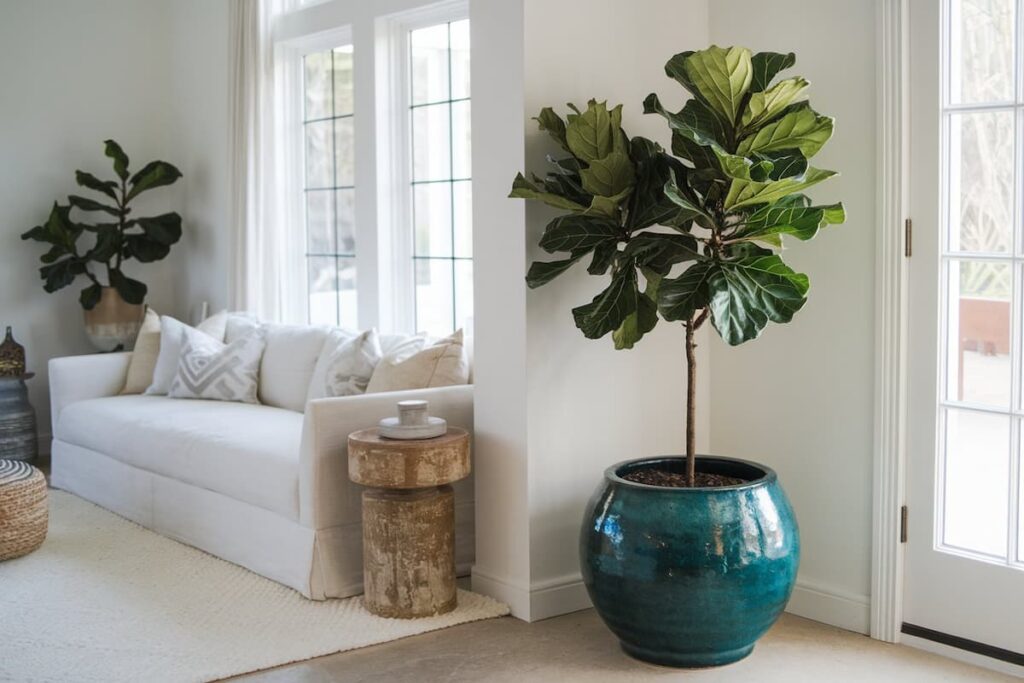
Inspect the Leaves
The leaves are the best indicator of a fiddle leaf fig’s health. Look for vibrant, green leaves that are free from spots, blemishes, or discoloration. Avoid plants with brown spots, yellowing leaves, or signs of pests. A few minor imperfections are normal, but excessive damage indicates underlying problems. Check both the top and undersides of the leaves for any signs of pests like spider mites or mealybugs. These can quickly infest your plant and cause significant damage if left untreated.
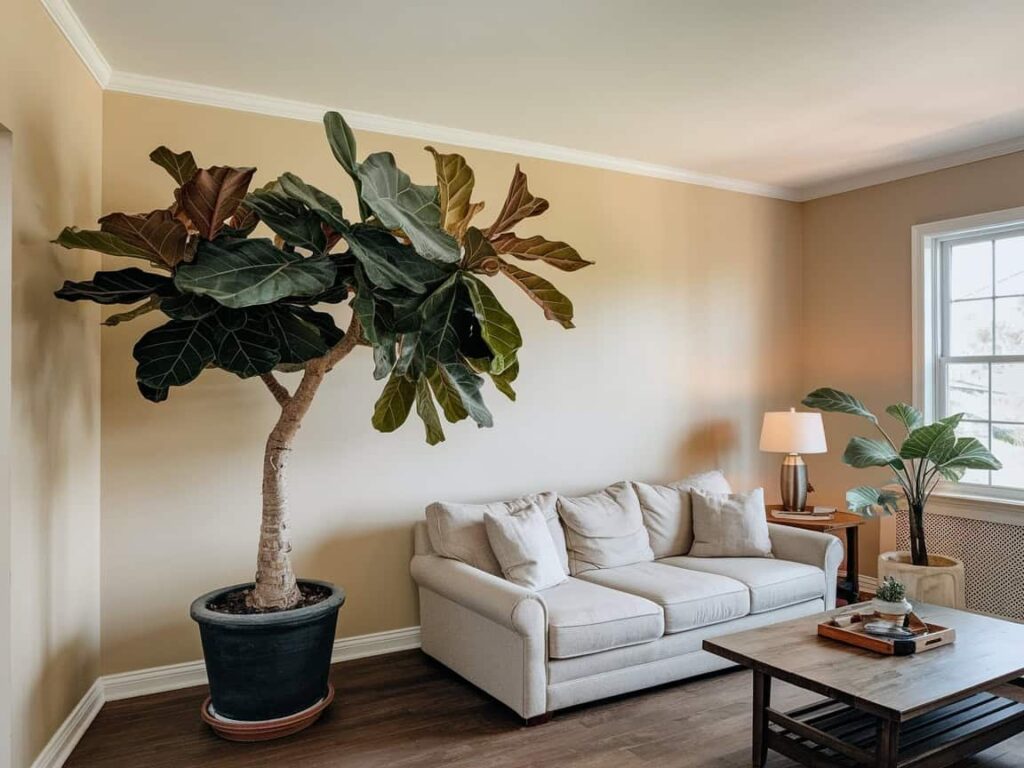
Check the Trunk and Soil
The trunk should be sturdy and upright, not leaning or wobbly. Inspect the soil for signs of overwatering, such as mold or a foul odor. The soil should be well-draining and slightly moist, but not soggy. Avoid plants that are sitting in standing water, as this can lead to root rot, a common killer of fiddle leaf figs. A healthy root system is vital to the plant’s overall wellbeing. If possible, gently lift the plant from its pot to inspect the roots. They should be firm and white or light brown, not mushy or dark.
Consider the Variety
While the standard fiddle leaf fig is the most common variety, there are also other options to consider. The ‘Little Fiddle’ is a smaller, more compact variety that is well-suited for smaller spaces. The ‘Bambino’ is an even smaller dwarf variety. Variegated fiddle leaf figs, with their striking cream-colored markings, are also available, though they can be more challenging to care for.
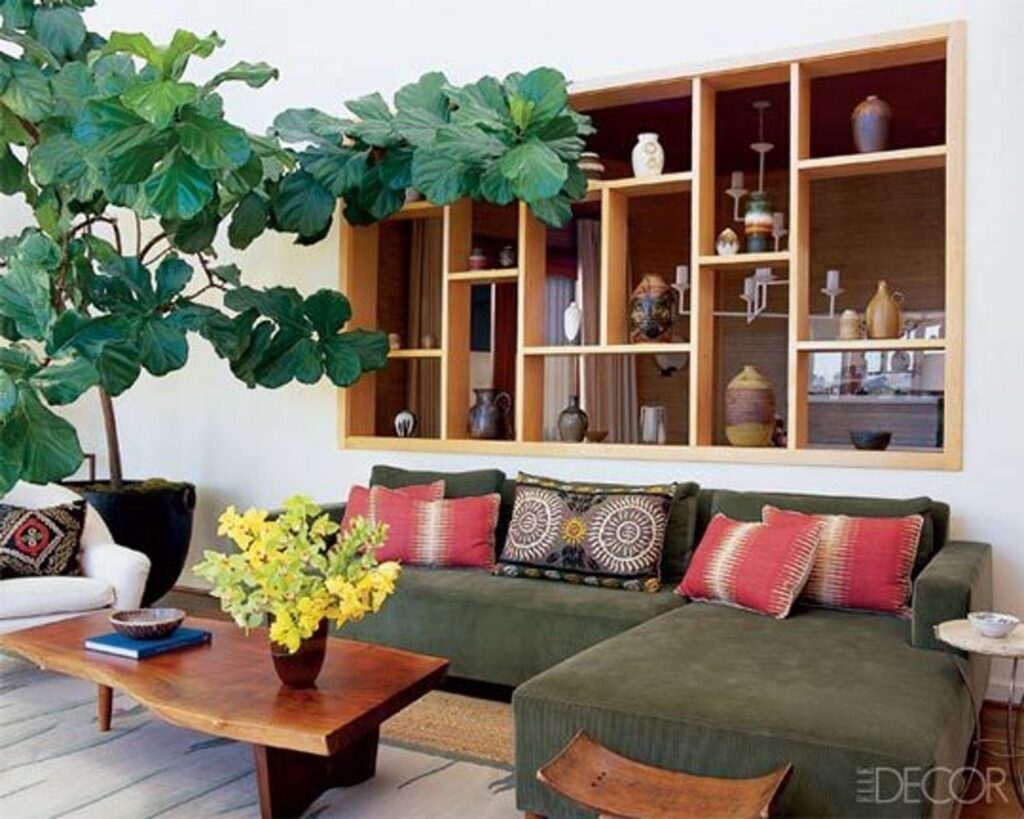
Caring for Your Fiddle Leaf Fig in the Living Room
Fiddle leaf figs are notoriously finicky plants, but with the right care, they can thrive in your living room. Here’s a breakdown of the essential care requirements:
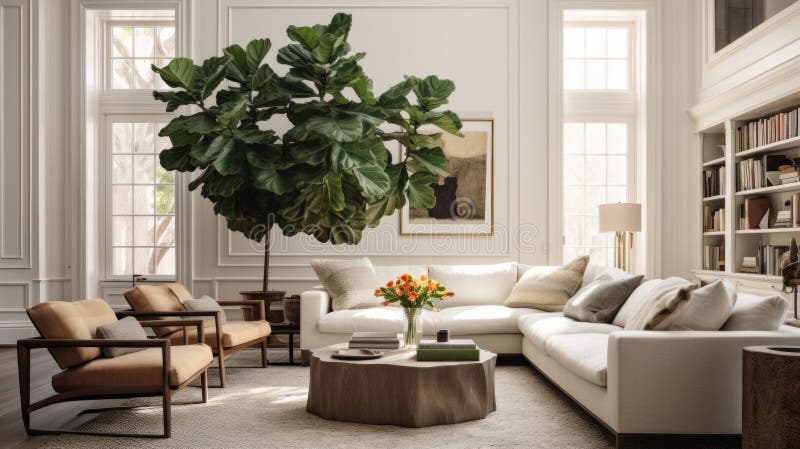
Light is Key
Fiddle leaf figs need bright, indirect light to flourish. Direct sunlight can scorch the leaves, while insufficient light can lead to leaf drop. A spot near a sunny window, ideally facing east or west, is ideal. If you only have a south-facing window, diffuse the light with a sheer curtain. Rotate your plant regularly to ensure even growth, as it will naturally lean towards the light source. If you notice the leaves becoming pale or dropping, it may not be getting enough light. Consider supplementing with a grow light, especially during the winter months.
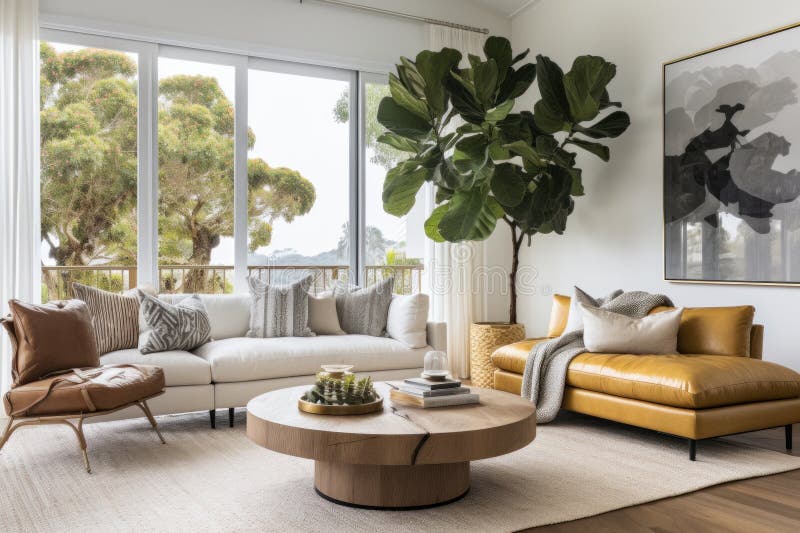
Watering Wisely
Overwatering is the most common mistake people make with fiddle leaf figs. Water thoroughly when the top inch or two of soil is dry to the touch. Use a moisture meter to accurately gauge the moisture level. Allow excess water to drain away completely. Avoid letting the plant sit in standing water. The frequency of watering will depend on the size of the pot, the temperature, and humidity levels. In general, you’ll need to water more frequently during the growing season (spring and summer) and less frequently during the dormant season (fall and winter). Signs of overwatering include yellowing leaves, brown spots, and mushy stems. Signs of underwatering include drooping leaves and dry, crispy edges.
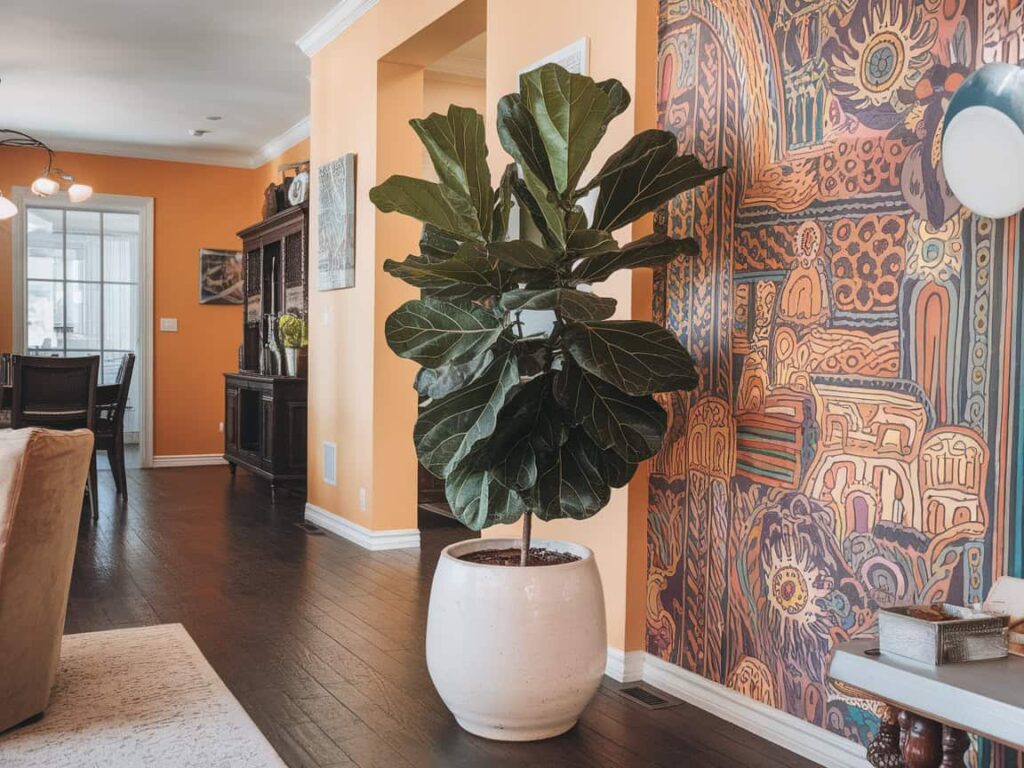
Humidity Matters
Fiddle leaf figs thrive in humid environments, mimicking their native tropical habitat. If your living room is dry, especially during the winter months, you’ll need to increase the humidity. There are several ways to do this:
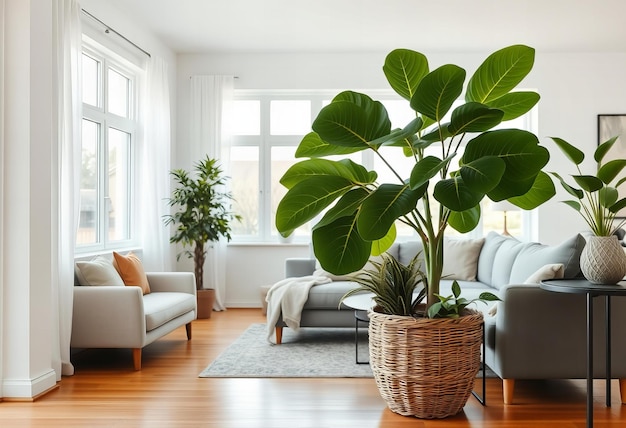
- Use a Humidifier: A humidifier is the most effective way to increase humidity around your plant.
- Group Plants Together: Grouping plants together creates a microclimate of higher humidity.
- Pebble Tray: Place the pot on a tray filled with pebbles and water. As the water evaporates, it will increase the humidity around the plant.
- Misting: Misting the leaves regularly can also help to increase humidity, but be sure to use distilled water to avoid mineral buildup.
Fertilizing for Growth
Feed your fiddle leaf fig with a balanced liquid fertilizer diluted to half strength every 2-4 weeks during the growing season (spring and summer). Do not fertilize during the dormant season (fall and winter). Over-fertilizing can lead to salt buildup in the soil, which can damage the roots. Always water your plant before fertilizing to prevent root burn.

Repotting as Needed
Fiddle leaf figs typically need to be repotted every 1-2 years, or when they become root-bound. Choose a pot that is slightly larger than the current pot and use a well-draining potting mix. Repotting is best done in the spring. Gently remove the plant from its pot, being careful not to damage the roots. Loosen the root ball slightly and place the plant in the new pot. Fill in around the roots with fresh potting mix and water thoroughly.

Cleaning the Leaves
Dust can accumulate on the large leaves of your fiddle leaf fig, hindering its ability to photosynthesize. Clean the leaves regularly with a damp cloth or sponge. This will also help to prevent pests. You can also use a leaf shine product to give the leaves a glossy appearance, but be sure to use a product that is specifically designed for houseplants.

Troubleshooting Common Fiddle Leaf Fig Problems
Even with the best care, fiddle leaf figs can sometimes experience problems. Here’s how to troubleshoot some of the most common issues:
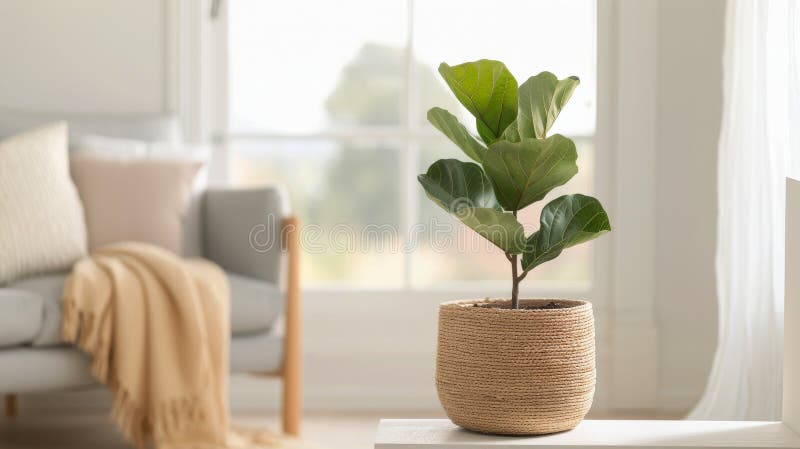
Leaf Drop
Leaf drop is a common symptom of stress in fiddle leaf figs. It can be caused by a variety of factors, including:

- Insufficient Light: Move your plant to a brighter location.
- Overwatering or Underwatering: Adjust your watering schedule accordingly.
- Sudden Changes in Temperature or Humidity: Avoid placing your plant near drafts or heating vents.
- Pest Infestation: Inspect your plant for pests and treat accordingly.
Brown Spots
Brown spots on the leaves can be caused by:
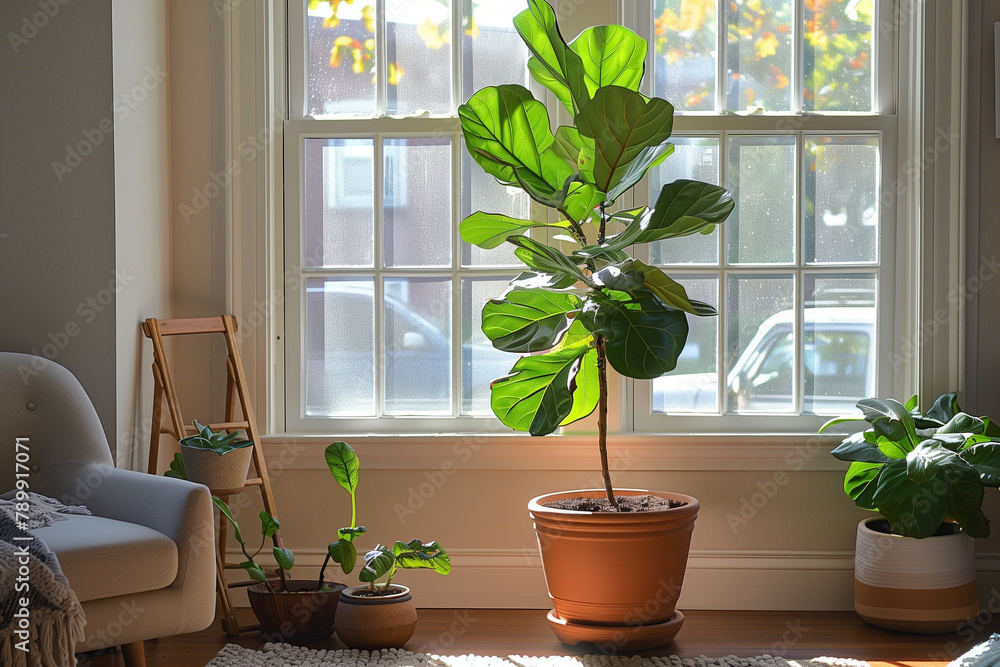
- Overwatering: Allow the soil to dry out more between waterings.
- Sunburn: Move your plant to a location with indirect light.
- Fungal Infection: Treat with a fungicide.
Yellowing Leaves
Yellowing leaves can be caused by:
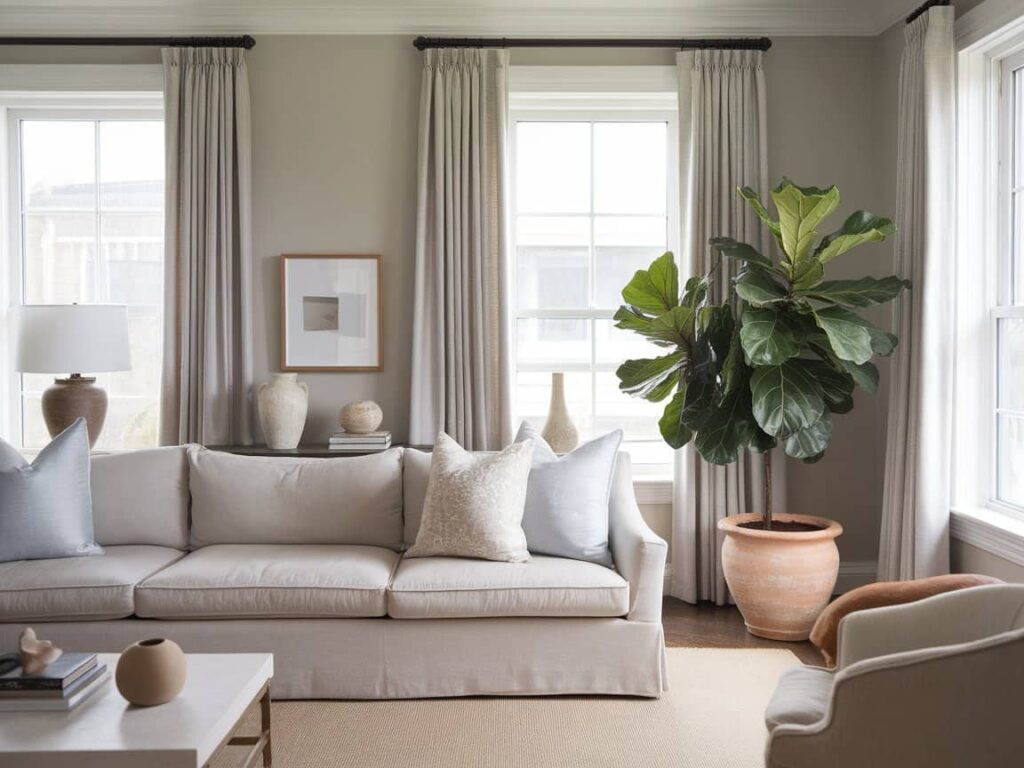
- Overwatering: Allow the soil to dry out more between waterings.
- Nutrient Deficiency: Fertilize with a balanced liquid fertilizer.
- Pest Infestation: Inspect your plant for pests and treat accordingly.
Pest Infestations
Fiddle leaf figs are susceptible to various pests, including spider mites, mealybugs, and scale. Inspect your plant regularly for signs of infestation, such as webbing, sticky residue, or small bumps on the leaves or stems. Treat infestations with insecticidal soap or neem oil.
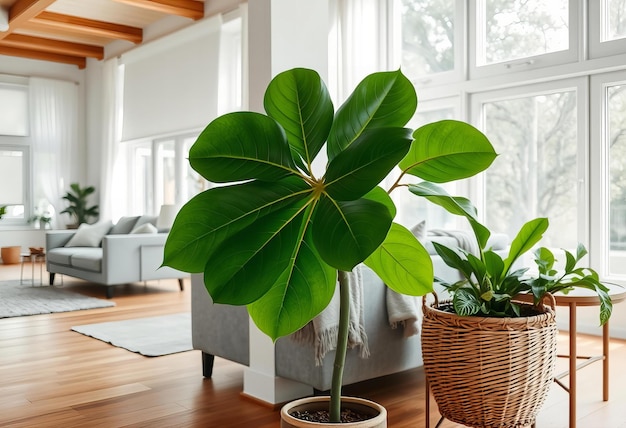
Styling Your Fiddle Leaf Fig in the Living Room: Decor Ideas
Now that you know how to care for your fiddle leaf fig, let’s explore some inspiring decor ideas for incorporating it into your living room:
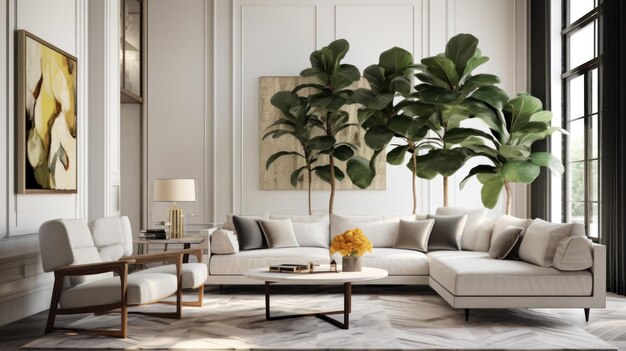
Placement is Key
The placement of your fiddle leaf fig is crucial for both its health and its aesthetic impact. Consider the following factors:
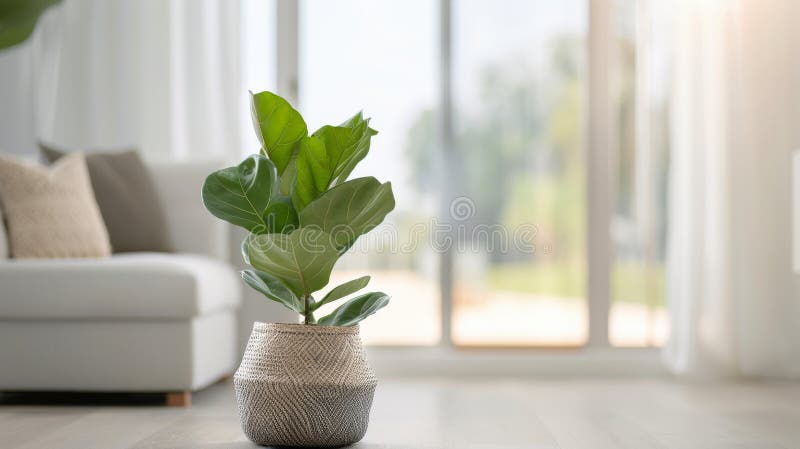
- Light Availability: Ensure that your plant receives adequate light.
- Traffic Flow: Avoid placing your plant in a high-traffic area where it could be easily bumped or damaged.
- Focal Point: Position your plant as a focal point in the room, drawing the eye and adding visual interest.
Potting and Presentation
The pot you choose for your fiddle leaf fig can significantly impact its overall appearance. Choose a pot that complements your interior design style and enhances the plant’s beauty. Consider the following options:
- Terracotta Pots: Terracotta pots offer a classic and timeless look.
- Ceramic Pots: Ceramic pots come in a wide variety of colors, shapes, and sizes.
- Woven Baskets: Woven baskets add texture and a bohemian touch.
- Modern Planters: Modern planters offer a sleek and minimalist look.
Elevate your fiddle leaf fig by placing it on a plant stand or pedestal. This will not only make it more visually prominent but also protect your flooring from water damage.
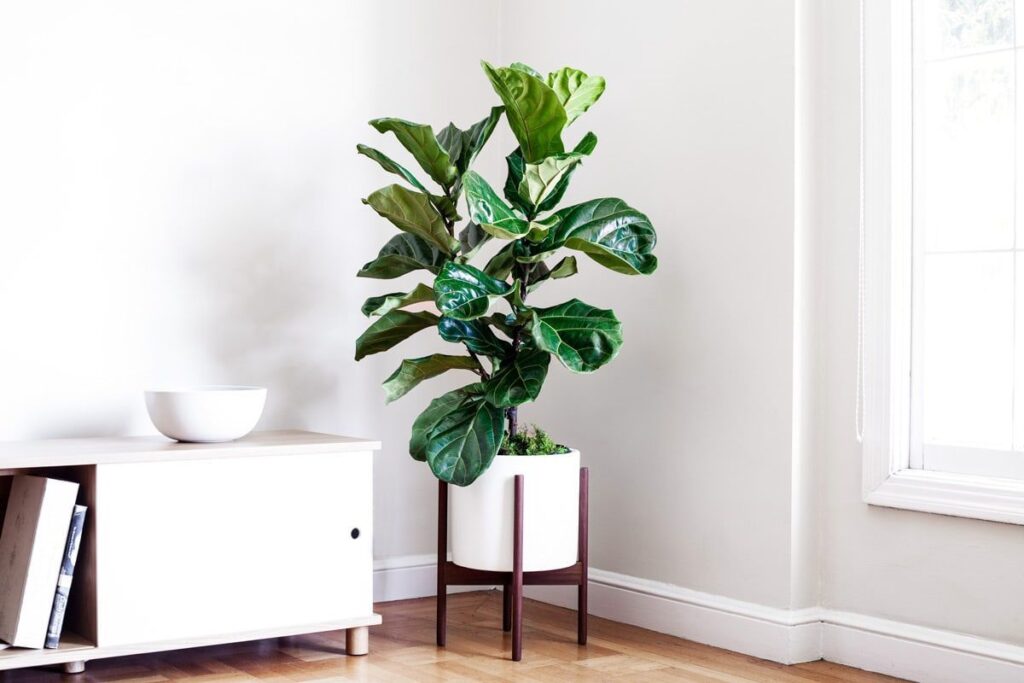
Complementary Decor
Surround your fiddle leaf fig with complementary decor to create a cohesive and stylish living room. Consider the following elements:
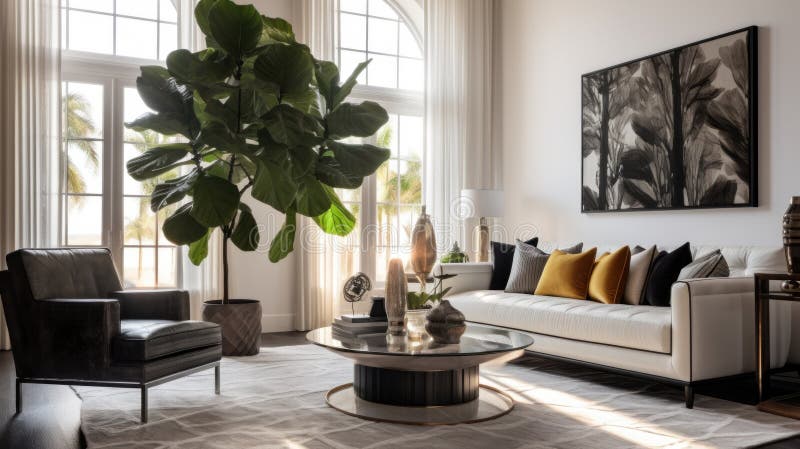
- Textiles: Incorporate textiles with natural textures and patterns, such as linen, cotton, and jute.
- Artwork: Hang artwork that complements the plant’s green foliage.
- Furniture: Choose furniture with clean lines and natural materials, such as wood and leather.
- Accessories: Add accessories that reflect your personal style, such as candles, books, and decorative objects.
Creating a Green Oasis
Transform your living room into a green oasis by incorporating other houseplants alongside your fiddle leaf fig. Choose plants with varying textures, shapes, and sizes to create visual interest. Consider the following options:
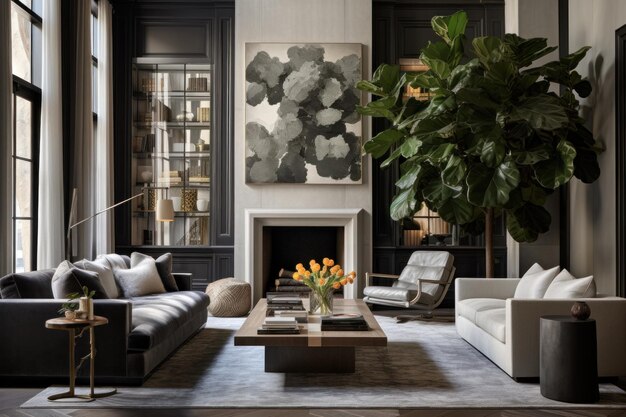
- Snake Plants: Snake plants are low-maintenance and air-purifying.
- ZZ Plants: ZZ plants are drought-tolerant and can tolerate low light conditions.
- Monstera Deliciosa: Monstera deliciosa plants add a tropical touch with their iconic split leaves.
- Peace Lilies: Peace lilies are elegant and purify the air.
Fiddle Leaf Fig in Different Living Room Styles
The versatility of the fiddle leaf fig allows it to seamlessly integrate into various living room styles. Here are some examples:
Modern Minimalist
In a modern minimalist living room, a single, well-placed fiddle leaf fig can add a touch of organic warmth and soften the clean lines. Choose a simple, modern pot and avoid cluttering the surrounding space. The focus should be on the plant’s sculptural form and its contribution to the overall sense of serenity.
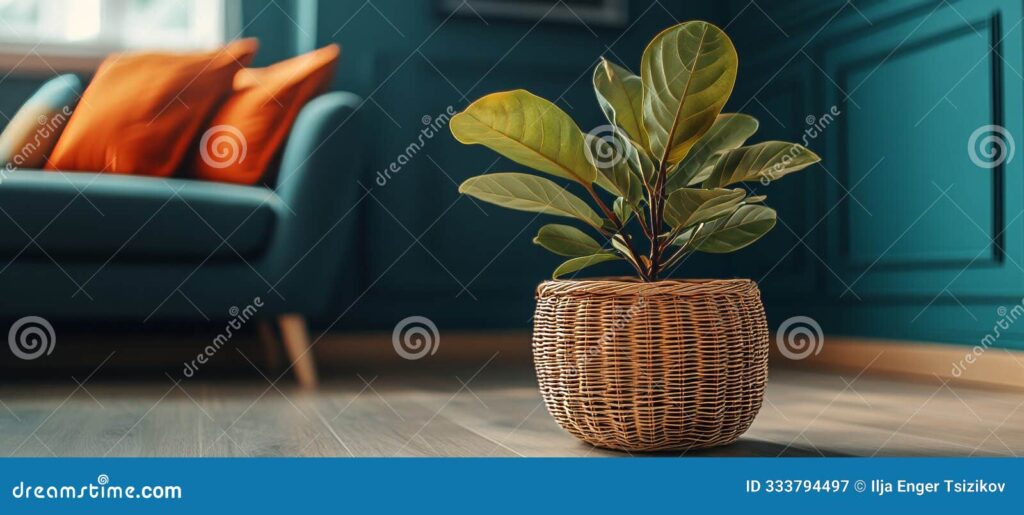
Bohemian Eclectic
In a bohemian eclectic living room, the fiddle leaf fig can be part of a larger collection of houseplants, creating a lush and vibrant atmosphere. Pair it with woven baskets, macrame plant hangers, and colorful textiles. Don’t be afraid to mix and match different styles and textures to create a unique and personalized space.
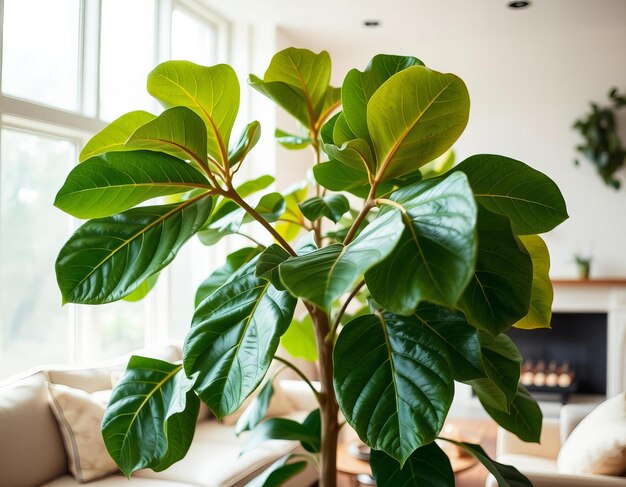
Scandinavian Inspired
In a Scandinavian-inspired living room, the fiddle leaf fig can add a touch of natural greenery and contrast the clean, white walls. Choose a simple, terracotta pot and pair it with other natural elements, such as wood furniture and linen textiles. The goal is to create a cozy and inviting space that feels both modern and organic.
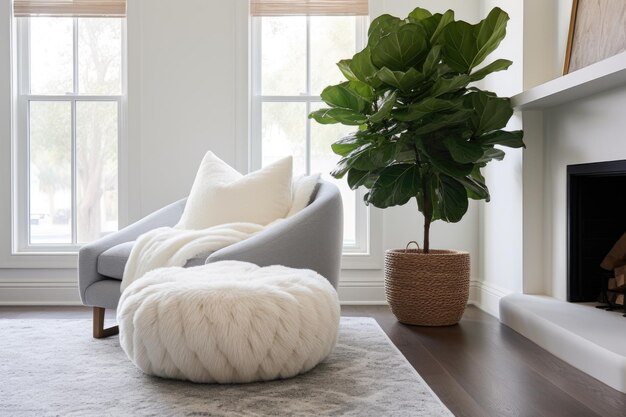
Traditional Elegance
Even in a more traditional living room, the fiddle leaf fig can find its place. Choose a classic, ceramic pot and pair it with antique furniture and rich textiles. The plant’s height and dramatic foliage can add a touch of grandeur to the space without feeling out of place.
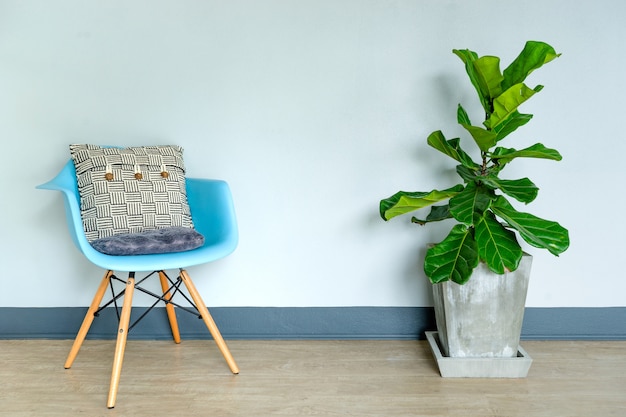
Beyond the Plant: Fiddle Leaf Fig Decor
If you love the aesthetic of the fiddle leaf fig but are hesitant to commit to caring for a live plant, there are plenty of other ways to incorporate its image into your living room decor:
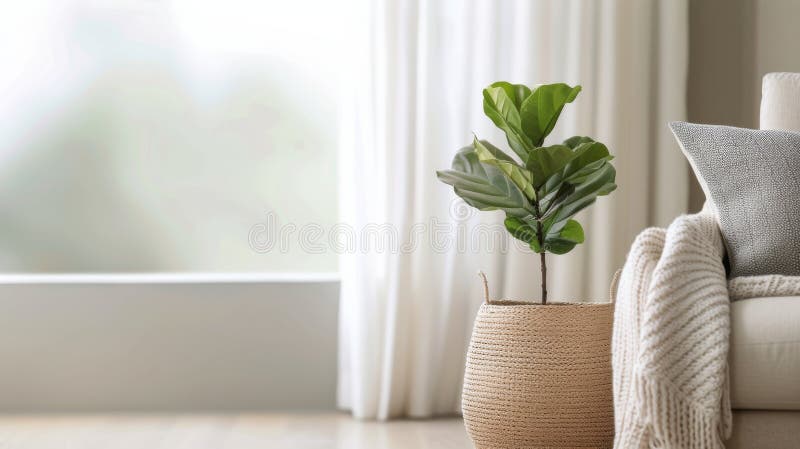
- Fiddle Leaf Fig Art: Prints, paintings, and photographs featuring fiddle leaf figs can add a touch of greenery to your walls without the maintenance.
- Fiddle Leaf Fig Wallpaper: Fiddle leaf fig wallpaper can create a dramatic and tropical accent wall.
- Fiddle Leaf Fig Textiles: Pillows, throws, and curtains featuring fiddle leaf fig prints can add a touch of botanical charm to your space.
- Artificial Fiddle Leaf Figs: High-quality artificial fiddle leaf figs can be a great alternative for those who lack the time or expertise to care for a live plant. Just be sure to choose one that looks realistic and well-made.
Conclusion: Creating Your Dream Fiddle Leaf Fig Living Room
The fiddle leaf fig is more than just a plant; it’s a statement piece that can transform your living room into a stylish and inviting space. By understanding its care needs and incorporating it thoughtfully into your decor, you can create a living room that is both beautiful and functional. Whether you choose a towering specimen or a smaller tabletop plant, the fiddle leaf fig is sure to add a touch of tropical elegance to your home. Embrace its unique beauty and enjoy the many benefits it brings to your living space. Don’t be afraid to experiment with different styling ideas and find what works best for you and your personal taste. With a little patience and care, your fiddle leaf fig will thrive and become a cherished part of your home for years to come.
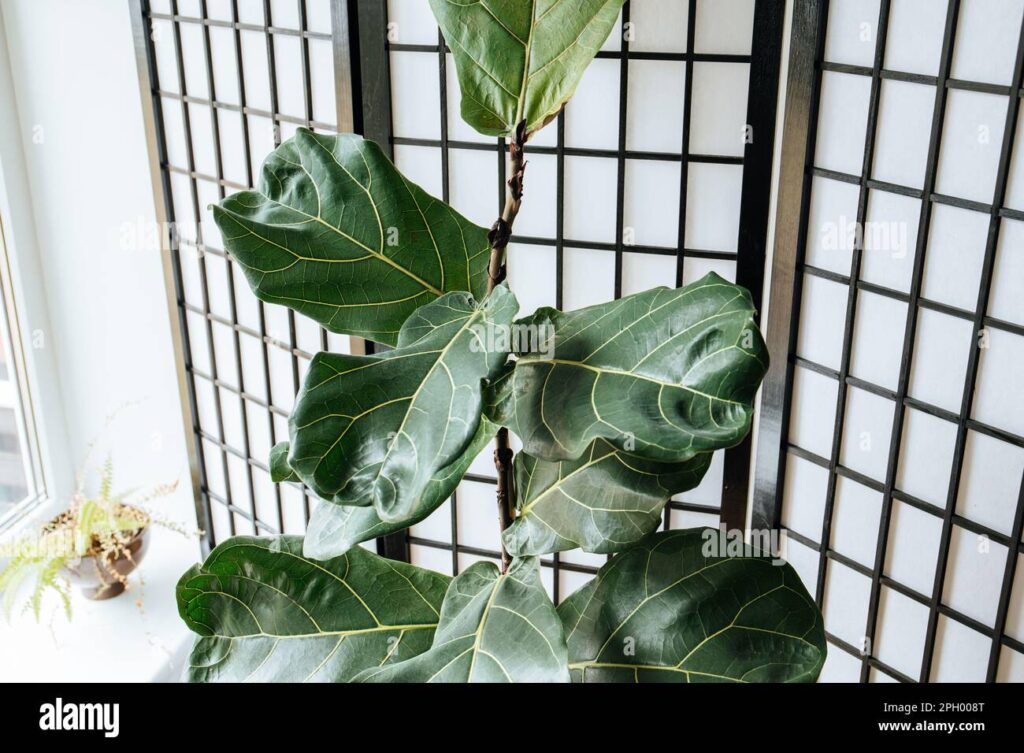
 Nimila
Nimila


